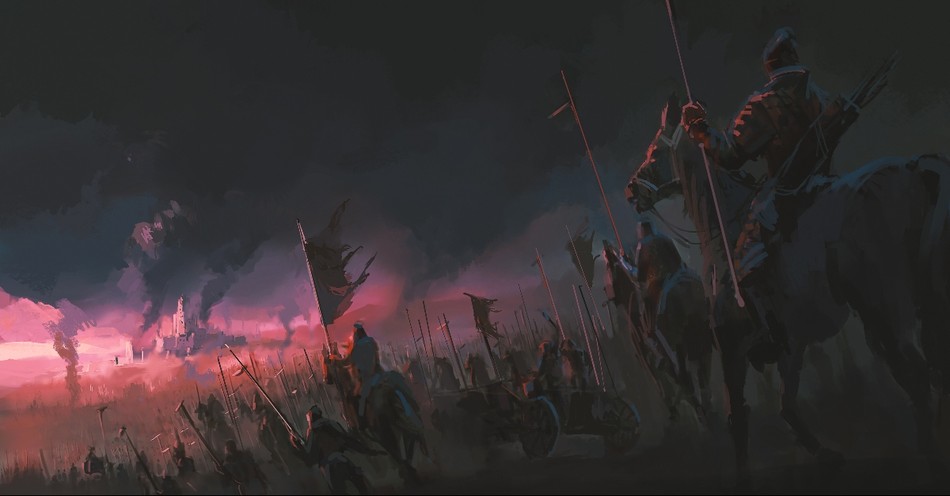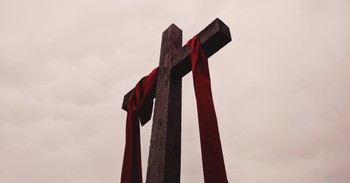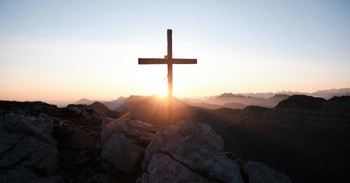The mention of "Gog and Magog" appears in both the Old Testament and the New Testament, specifically in the books of Ezekiel in the Old Testament and Revelation in the New Testament. However, there are notable differences in how these passages are interpreted, and there is no universally agreed-upon interpretation. Gog and Magog symbolize something sinister having to do with the End Times. They also represent historical peoples that existed a little after the time of Noah and explode onto the scene in Ezekiel 38 and Ezekiel 39.
In this article, we’ll differentiate between the historical Gog and Magog featured in Ezekiel, and the Gog and Magog mentioned in Revelation 20:8-9. We’ll also lightly touch on the symbolism of these two names and how they play a role during the Last Days.
Finally, we’ll discuss why we should invest our attention on the topic at hand. After all, all of Scripture is God-breathed. That means even we can apply and learn from some of the most seemingly minor details in our own lives.
Quick Summary Gog and Magog
Historically
In the Bible, Magog is recorded as one of Noah's grandsons, according to Genesis 10:2. His lineage is believed to have migrated and settled in regions far to the north of Israel, possibly encompassing parts of Europe and northern Asia, as suggested in Ezekiel 38:2. The name "Magog" often refers to these northern territories and their inhabitants, who are sometimes described as "northern barbarians." This term not only links back to Magog as an individual but also characterizes his descendants. In the biblical narrative, particularly in Ezekiel 38:15 and 39:3-9, the descendants of Magog are portrayed as formidable warriors, highlighting their prowess in battle.
In End Times
In the Book of Revelation, Gog and Magog are mentioned briefly in a symbolic context. In Revelation 20:7-10, they are described as nations from the four corners of the earth that gather together for battle at the end of the Millennium, the thousand-year reign of Christ. These forces, led by Satan who has been released from his prison, encircle the camp of God's people and the beloved city, Jerusalem. This leads to a final confrontation where fire comes down from heaven and consumes them, and Satan is then thrown into the lake of fire. In this apocalyptic setting, Gog and Magog symbolize the ultimate enemies of God's kingdom, representing all forces of evil aligned against divine authority and God's people in the final battle.
Who is Gog in the Old Testament?
Reading the book of Ezekiel, one might have a hard time differentiating which visions pertained to Israel’s situation during the context of the book and which ones foreshadowed events to come in the End Times (and which fit into both categories).
But we do have a historical Gog and Magog that differ from the counterpart we see in Revelation.
In the Old Testament, the term or name "Gog" is found in the book of Ezekiel, chapters 38 and 39. Gog is described as a leader or ruler from the land of Magog. The passage portrays a prophecy of a future invasion of Israel by Gog, along with a coalition of other nations. This prophecy includes a divine intervention where God defeats Gog and protects Israel. The exact identity of Gog and Magog and the specific historical context of this prophecy are subjects of debate among scholars and theologians.
The word of the LORD came to me: "Son of man, set your face against Gog, of the land of Magog, the chief prince of Meshek and Tubal; prophesy against him and say: ‘This is what the Sovereign LORD says: I am against you, Gog, chief prince of Meshek and Tubal. I will turn you around, put hooks in your jaws and bring you out with your whole army—your horses, your horsemen fully armed, and a great horde with large and small shields, all of them brandishing their swords...'" (Ezekiel 38:1-4).
"Son of man, prophesy against Gog and say: ‘This is what the Sovereign LORD says: I am against you, Gog, chief prince of Meshek and Tubal. I will turn you around and drag you along. I will bring you from the far north and send you against the mountains of Israel. Then I will strike your bow from your left hand and make your arrows drop from your right hand. On the mountains of Israel you will fall, you and all your troops and the nations with you. I will give you as food to all kinds of carrion birds and to the wild animals...'" (Ezekiel 39:1-2).
We see Gog make a brief appearance earlier in 1 Chronicles 5:4, as a descendant of a prophet named Joel:
The descendants of Joel: Shemaiah his son, Gog his son, Shimei his son, Micah his son, Reaiah his son, Baal his son, and Beerah his son, whom Tiglath-Pileser king of Assyria took into exile.
We don’t receive a whole lot of other information about Gog, except that he comes from the North and seeks to invade and plunder Israel. In summary, Gog is seen as representing those opposed to God's people, embodying the ultimate forces of evil and opposition that will emerge before the eschatological (end-time) victory of good.
Who is Magog in the Old Testament?
As for Magog, there seems to be a bit of debate as to whether Gog and Magog are one and the same, or Gog hails from the northern region of Magog. The name Magog first appears as the second son of Japheth, one of Noah's three sons, in the Table of Nations in Genesis 10:2 and 1 Chronicles 1:5. As a descendant of Noah, Magog is considered the progenitor of a nation or group of people.
"Gog seems to be the king and Magog the kingdom; so that Gog and Magog are like Pharaoh and the Egyptians." (Matthew Henry's commentary on Ezekiel 38)
Some have conjectured as to the specific kingdom of Magog that sought to destroy Israel: Lydia, Sabi, Scythia, or perhaps the Seleucids.
Magog is also referred to as a land in the prophetic book of Ezekiel, where it plays a significant role in the prophetic visions concerning Gog and Magog. In Ezekiel 38 and 39, Magog is associated with Gog, the prince of Rosh, Meshech, and Tubal, and is depicted as a land from the far north that will wage war against Israel in the end times.
In either case, it appears either a nation or many nations will team up against Israel (or had) and that they will not stand against the powers of the Almighty God. We also do know that they are (or were) skilled warriors who hail from kingdoms north of Israel, but again, we don’t receive many details about them except they appear to be a threat.
The name "Magog" itself doesn’t have a clear etymology within the Biblical texts, and its specific meaning is not explicitly defined in the scriptures. However, in the prophetic context, it has come to symbolize forces opposing God’s people, often interpreted as symbolizing distant or hostile nations. Throughout history, various interpretations and speculations have connected Magog with different regions and peoples, often those considered as adversaries or outsiders from the perspective of Israel.
Gog and Magog in Revelation's End Times
In the New Testament, the term "Gog and Magog" is mentioned in the book of Revelation, specifically in Revelation 20:7-10. Here, Gog and Magog are referred to in the context of the final battle at the end of the world. The passage describes Satan's release from his prison and his deception of the nations, Gog and Magog, to gather them for battle against God's people. However, God intervenes and defeats them, casting Satan into the lake of fire.
We run into a sticky situation here, because this entirely depends on when the End Times take place. Some have conjectured various northern kingdoms and superpower nations today to represent the Gog and Magog we see in Revelation 20:7-8.
When the thousand years are over, Satan will be released from his prison and will go out to deceive the nations in the four corners of the earth — Gog and Magog — and to gather them for battle. In number they are like the sand on the seashore. They marched across the breadth of the earth and surrounded the camp of God’s people, the city he loves. But fire came down from heaven and devoured them (Revelation 20:7-9).
Centuries of scholarly division have been poured over this issue, so this article does not intend to debate with anyone about which kingdom represents Gog or Magog.
Although we do not know the exact nature of the kingdom of Gog and Magog, we do know from Revelation that armies from these kingdoms will join forces with Satan in an attempt to destroy God’s people. According to John Lees' entry in the International Standard Bible Encyclopedia, Revelation's mention of Gog and Magog fighting God's people fits a larger tradition:
"In the Apocalypse of John, Gog and Magog represent all the heathen opponents of Messiah (Revelation 20:8), and in this sense these names frequently recur in Jewish apocalyptic literature."
We know from the description in Revelation 20 that Satan manages to muster a large army. Together, these forces launch an attack on Jerusalem, but their progress gets cut short because fire from heaven consumes them.
Roger Barrier at Crosswalk.com explains it this way:
"The previously mentioned passages are literal words which describe the horrible events of the last days While Russia is destroyed by the Antichrist just before the seven-year tribulation begins, Gog and Magog will rearm and take part in the war of Armageddon. As a result of the war between the King of the North and the Antichrist, Israel is open to signing a seven-year-peace treaty with the Antichrist to protect them from other invasions. After three and half years the Antichrist breaks the peace treaty by invading Israel and all the horrors of the book of Revelation break forth over the earth. During the last days, God brings the armies of the Antichrist, Russia, the Middle East, the Arab-African coalition and China together in the Valley of Megiddo for the Battle of Armageddon."
Interpretations of Gog and Magog in Ezekiel and Revelations
Symbolic Interpretation: Some scholars and theologians view the references to Gog and Magog in both the Old and New Testaments as symbolic rather than literal. They see these references as representing the forces of evil and chaos that oppose God's people. In this interpretation, the specific identities of Gog and Magog are less relevant than the spiritual significance of the conflict.
Historical Interpretation: Others suggest that the references in Ezekiel may have had a historical context, possibly related to ancient peoples and events. In contrast, the reference in Revelation takes on a more symbolic and eschatological (end-times) meaning.
Literal Interpretation: Some hold to a more literal interpretation, suggesting that Gog and Magog in both passages refer to specific future events involving actual nations or leaders. This view often involves attempts to identify modern nations with Gog and Magog, but such identifications are highly speculative and subject to debate.
Ultimately, the interpretation of Gog and Magog in these biblical passages can vary widely among different religious traditions and scholars. Some see these passages as offering insight into future events, while others emphasize their symbolic and theological significance in the broader narrative of the Bible. It's important to approach these texts humbly and understand that one's theological framework and perspective can influence interpretation.
Why Are the Nations of God and Magog Significant?
BibleStudyTools.com: Why are the nations of Gog and Magog significant? - Gary Yates from biblestudytools on GodTube.
(The following is a transcript of the video above, edited for readability)
I think the prophecy about Gog and Magog in Ezekiel 38 and 39 is picturing something that is prophetic and talking about a battle that will take place in the last days where there's going to be an enemy that assaults Jerusalem and Israel and the people of God. And the passage talks about the fact that God is going to miraculously deliver his people. These nations are going to march up to fight against Israel, but there's not going to be much of a war because the Lord sends an earthquake and destroys them, and there's just going to be dead bodies scattered everywhere.
Throughout church history, people have made all kinds of attempts to try to identify the armies and who they are. And typically, we've identified them with whatever group we didn't particularly like at that time, or whoever our enemy at that time in church history. And so, I think the purpose of this passage is not to identify these nations specifically. The name Gog seems to be a reference to an Ancient Near Eastern king from Lydia whose name was Gyges. And I think Ezekiel is using this very brutal warrior as a model of what the future king would be like, who would lead this coalition against Israel. And so it's not, again, to identify a specific person or a specific place. It's using a king from that day as a model of the enemy who would attack Israel in the future. And Israel had experienced all kinds of attacks and ultimately the Babylonians destroyed the... There's going to be a war like that.
The interesting thing about Gog's allies is that it mentioned seven nations, and again, prophetically, many people have tried to identify them with the nations that happen to be in that particular territory at whatever time in history we might be talking about. I think a better way to look at these nations is, again, to see them more idealistically or just as representative. These nations come from all four directions. They are seven nations. And so I think what Ezekiel is envisioning for us is a worldwide attack on Israel. He's not trying to necessarily identify for us the players that are in the game, but simply giving us a vision of what this future battle would be like, and giving us an assurance that when this happens, the Lord is going to defeat these enemies.
Gog and Magog end up being referenced again in Revelation 20, and again, it's associated with the final battle, the final rebellion. Satan is released from the pit for a short time. He organizes another army that will march against God and God's people. And again, the Lord is instantly going to destroy them. So I think there's prophetic significance to this. There is going to be a war in conflict of this nature, but trying to use that passage to identify who this is or where these nations are, I really don't think that's the purpose or the intent of the passage.
Why Do Gog and Magog Matter Today?
As Christians, we have a tendency to ignore passages in the Old Testament. We may not see them as relevant or only want to focus on the New Testament. But we have to keep in mind that Scripture is one big story, and if we skip three-quarters of it, we miss out on a big part of the redemption arc of humanity and this world.
In the same way, weird visions Ezekiel experiences that may have to do with kingdoms that existed during or after his time have high relevance for us today. As we approach the Last Days, we need to know what’s in store for us, or future Christians, when the events of Revelation come to pass.
And we need to read the entire Bible, not just portions that we enjoy or portions of the New Testament. If we want to understand God’s redemptive story, that includes reading passages found in Ezekiel about two (or possibly one) kingdoms with rhyming names.
Further Reading:
Easton's Bible Dictionary - Gog
Gog - Meaning and Verses in Bible Encyclopedia
Related Resource: Is the War of Gog and Magog Already Here? Understanding Ezekiel 38-39
Is the war of Gog and Magog already here? In today’s episode of Inside the Epicenter, we delve into the ancient prophecy of Ezekiel 38-39 and its relevance to Israel today. He discusses the mysterious figure of Gog, the alliance of nations, including modern-day Iran, and the prophetic war of Gog and Magog. Join us as Joel explores Israel’s journey from its rebirth in 1948 to its current spiritual awakening and analyzes the alliances of Russia, Iran, Sudan, Libya, and Turkey through the lens of biblical prophecy. Whether passionate about scripture or intrigued by current geopolitical dynamics, this episode promises insightful and thought-provoking analysis. Let’s dive into the profound intersection of faith and current events. Listen in and be sure to subscribe to Inside the Epicenter on on Apple or Spotify so you never miss an episode!
Photo Credit: ©iStock/GettyImages Plus/liuzishan
Hope Bolinger is an acquisitions editor at End Game Press, book editor for hire, and the author of almost 30 books. More than 1500 of her works have been featured in various publications. Check out her books at hopebolinger.com for clean books in most genres, great for adults and kids. Check out her editing profile at Reedsy.com to find out about hiring her for your next book project.
This article is part of our Bible resource for understanding the significance and meaning of biblical phrases and ideas. Here are our most popular Bible articles to grow in your knowledge of God's Word:
Promises of God in the Bible
Is "This Too Shall Pass" in the Bible?
What Was the Ark of the Covenant?
Top 10 Bible Stories for Kids
“Iron Sharpens Iron” in Proverbs 27:17
"Fearfully and Wonderfully Made" in Psalm 139
“Be Still and Know That I am God” in Psalm 46:10
"No Weapon Formed Against Me Shall Prosper" - Isaiah 54:17



